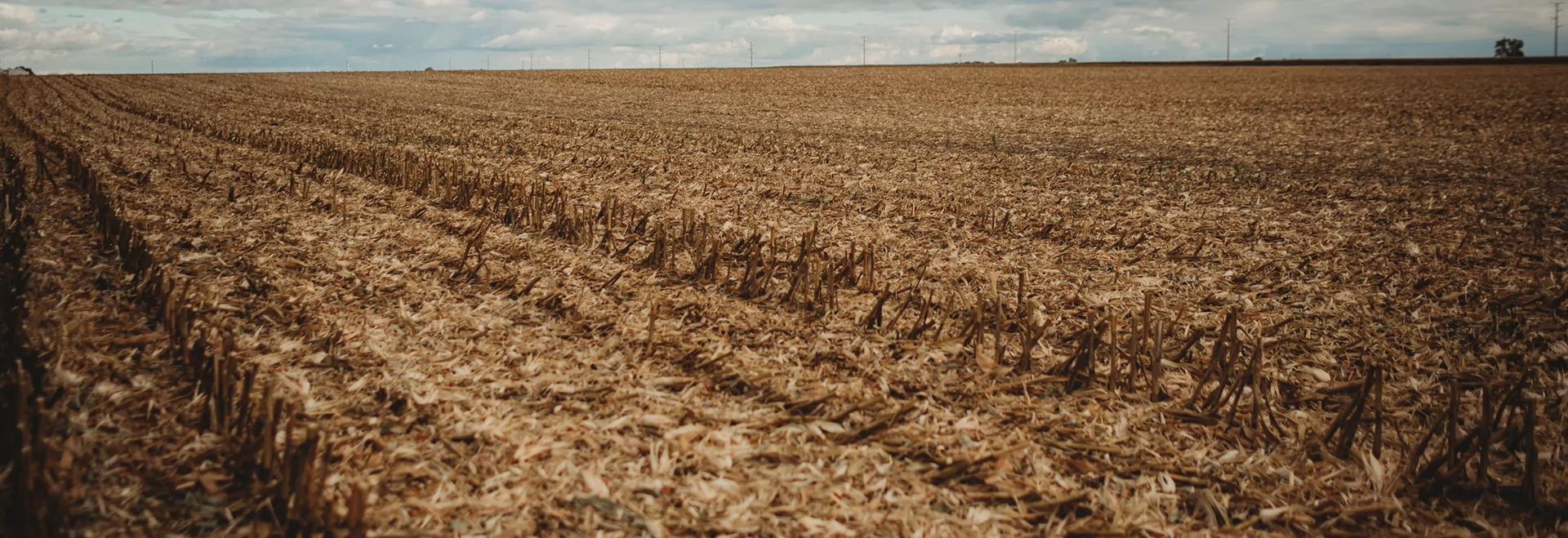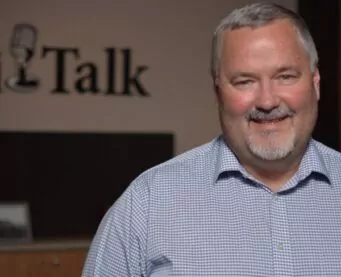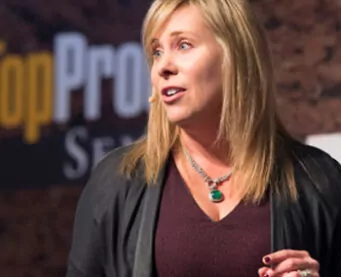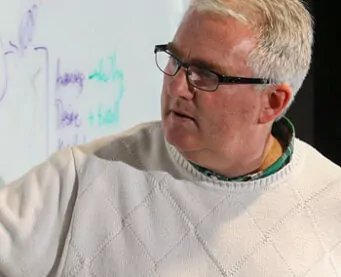When employees become like family, you’re doing something right. If you’ve had the chance to work with Nicole Hall, who has served our Taranis team as a customer success representative for the past couple of years, you understand how integral she and her teammates are to our team and your experience.
Nicole grew up on a farm in Boone County, Indiana. Never straying far from her roots, Nicole transitioned into a role on the family farm after acquiring her most important title, “Mom” to Hank Allen.
In this episode of the AcreForward podcast, Mike sits down with Nicole’s dad, Dave Chance, a first-generation Indiana farmer and proud grandpa, to learn about Nicole’s family’s farming operation.
“Nicole has had a great experience (at Taranis) as a Customer Success Representative, but she and her husband John are actually joining the farming operation and she’s chosen to stay home with Hank and help us on the farm with a lot of the electronic things we have going on,” Dave shares. “We’re excited, not only to have her home and have our grandchild with us to watch him grow, but we’re just excited to see what the future brings.”
An Inside Look at Taranis AcreForward Crop Intelligence
With the “inside” scoop, Dave has employed Taranis on his acres for the past two growing seasons, using the solution on his corn and soybean acres. Nicole served as his customer success representative, helping her family’s farm and many others validate practices and seed selection while simultaneously creating opportunities to be proactive on the farm.
“AcreForward is very interesting. I love to scout, it is one of my favorite things to do. But Taranis has led us on a very intriguing journey. The first year we used AcreForward, I had scouted a [soybean] farm in Clinton County. From the scouting I did on the ground, I didn’t see any problems. The soybeans were mid-to-late V stages—around the second week of June,” Dave explains. “I got a call from Nicole, and she’s telling me, “Dad, this field is full of grass”. We looked at the images, and it was full of barnyard grass, and the really neat thing is because I had that data in a timely fashion, I was able to get in there the next day and spray. We wouldn’t have seen that grass until R1 or R2, and it would have been yield-impacting at that point. Let’s say it saved me 10 bushels/acre, with the premium we were getting on non-GMO soybeans at that time, that was $33,000, and I would have missed it without that image.”
Watching the future unfold on the farm, seeing Taranis and other technologies and advancements evolve to change the dynamics of farming has been a lifelong dream for Dave, one he shares he’s had since before he reached double digits.
“I grew up just north of Westfield (Indiana). My dad was a biochemist for Eli Lily in Indianapolis and worked in the insulin research field. But he loved farming. Instead of having a big house and nice cars, he would buy farms. When I was five or six, he was farming 50/50 on a lot of his ground, and I can remember riding on those tractors: just the smell of the soil being plowed, seeing earthworms and life in the soil, smelling the smells and seeing the sights…I got that fever at a very young age and knew I wanted to be a farmer,” he says, offering that his love and excitement for the soil has never left him.
Planting a Future
Dave attended Purdue University, studying animal science and participating on the livestock judging team.
When Dave married his wife, Jill, in 1992, the couple made the decision to leave Westfield. Buying a farm in Boone County, they built a 300-sow breed-to-wean farrowing operation and have never looked back, using hard work and determination to accelerate their desire to farm full-time.
“We mainly raised pigs for the first several years, rented farm ground, and Jill and I worked off the farm. We didn’t get into grain operations until the mid-nineties. We were buying equipment as we could afford it, and then, by God’s grace, we had the opportunity to acquire 2200 acres in Clinton County. Today, we’re full-time grain farmers,” he says.
Dave and Jill have witnessed a lot of changes in farming, beginning their operation just prior to the release of genetically modified crops. The pair also saw the introduction of the no-till movement that changed agriculture and witnessed the introduction and widespread adoption of ag technologies like GPS and autosteer that many younger farmers have never farmed without. However, the biggest advancements, Dave says, came from the time and yield-saving chemistries that kept the weed hoes in the shed, the seeds that created performance opportunities in his most challenging soils, and the technology that allowed him to evaluate individual fields for profitability.
For the most part, Dave says that technology on the farm has made his life easier and more productive but notes that it has also added a layer of complexity to what he does. More information also means more opportunities, but those opportunities have to be defined and mapped out.
“As technology increases, some things get easier, but other things get more complex. You’re operating with a lot of variability: management practices, equipment performance, seed genetics, agronomy, biology, and chemistry; it all becomes an applied art because there’s so much information that it creates unknowns that you have to work through. We have the ability to unpack and quantify a lot of this information, but then the question becomes, “Which layers are important, and how do we use those to make better decisions?”
Keeping the Constants
No matter how advanced technology becomes, soil health is still the cornerstone of farming.
“God has created a really, really intensively dynamic system, and he’s allowed us to kind of discover it a little bit at a time,” Dave says. “I don’t understand it, but what I do understand is that you have to feed it, and what I understand through animal nutrition is that it has to be fed a balanced diet in order to operate at an optimum level. Everything in balance.”
Using Taranis for the past two growing seasons, Dave has had access to more information than ever before: stand counts, weed pressures, challenging areas, and areas of productivity—all of which play into the decisions he makes.
DiPaola asks, “How are you using all of this new information on the farm? How are you using this information to pick seed?”
The answer, Dave says, still lies with the trusted advisor group he works with. Leveraging the knowledge and trust he has built with the seed company’s agronomist and plant breeding team, varieties are chosen and tested.
He adds, “We were non-GMO for some time, and we have gone back to GMO seeds because we are beginning to see weed pressures through our own scouting and through Taranis. We’re also starting to see some corn rootworm pressure and corn borer pressure. It’s easier to deal with if we are using a [trait] stacked corn variety.”
Dave describes the operation as very conservation-minded, with strong maintenance of critical thinking about what is needed to make the farm profitable and productive for this generation and the next. He cites both glyphosate and no-till as opportunities for farmers to look at what they are doing, question the status quo, and make decisions for their individual operations.
“I’ll tell you, and it may not be the popular opinion, we are becoming extremely dependent on chemistry to control different weeds. There are two things I know: Glyphosate is a very strong chelating agent and a very strong microbial,” he says. “We are looking at more conservation-type tillage. We aren’t completely inverting the soil, we want to make sure it is still covered, but we have to use all of the tools in our toolbox. I don’t want to get trapped in a system because it’s popular and lose the ability to do what’s best for our farm. We don’t want a yield-limiting system.”
The farm is also looking to technology to help guide decision-making – a value Dave says Taranis delivered multiple times in #Grow23.
Rain after planting, followed by cold conditions, brought up the question of replanting: to tear it up or let the genetics prove the variety was the question. Taranis imagery provided the details Dave needed to give the genetics a shot. In mid-June, Mother Nature gave AcreForward Crop Intelligence another opportunity to show, in detail, what was happening in the field.
“We got hit by a hailstorm, and Taranis showed that beautifully. It was depressing to see the pictures of the leaves ripped up, which really struck two, but we decided not to replant it,” Dave says. “The pictures were very good information because they did indicate that we were on the borderline of some of our stands not being correct, and we may need to take action to correct that. If we would’ve been at a 26,000 population, we would have gone in and replanted, no question. But with the data showing the whole field, not just one or two spots, but the whole field showing 32,000, we had the confidence not to replant. That field ended up being the third-best farm this year.”
Watch the episode to hear more of Mike and Dave’s conversation, or find other episodes at www.AcreforwardPodcast.com




